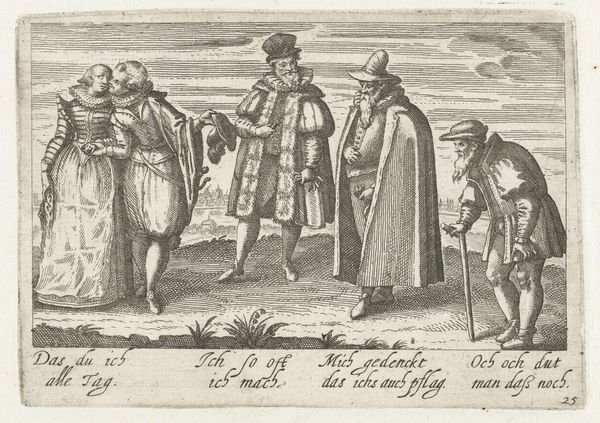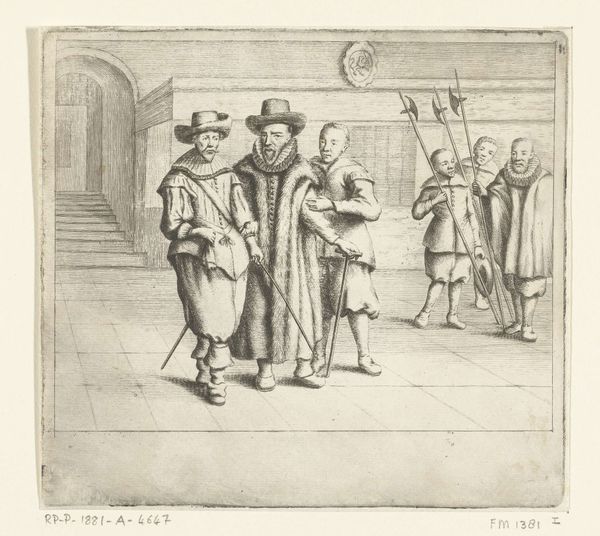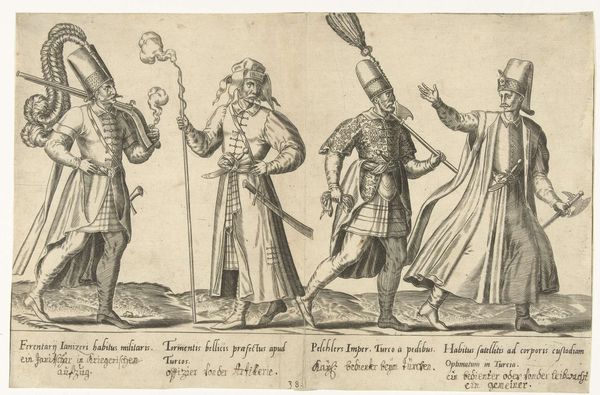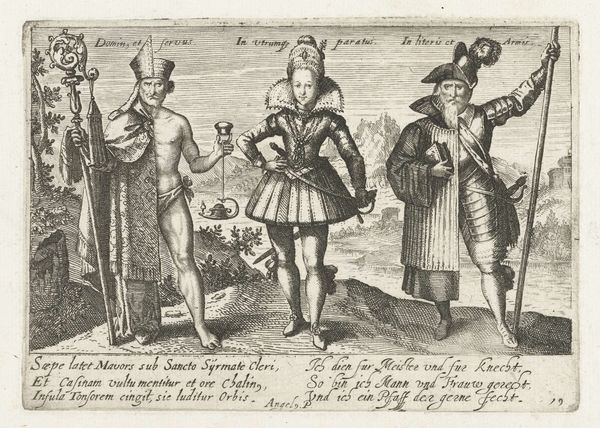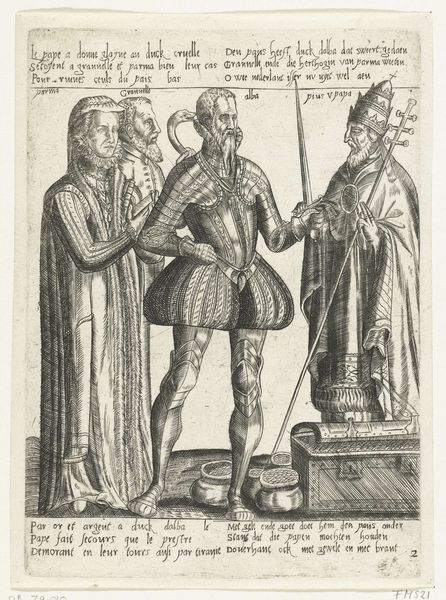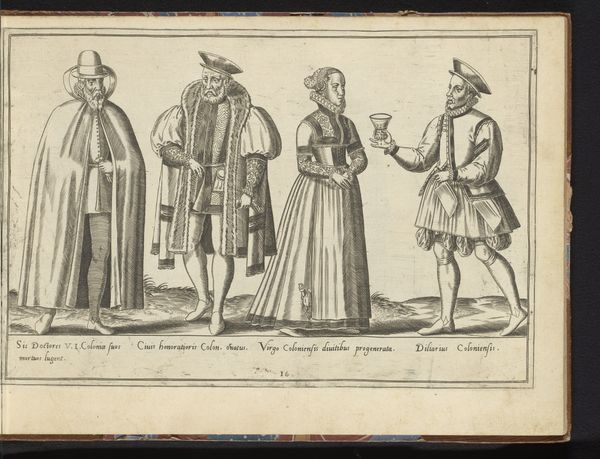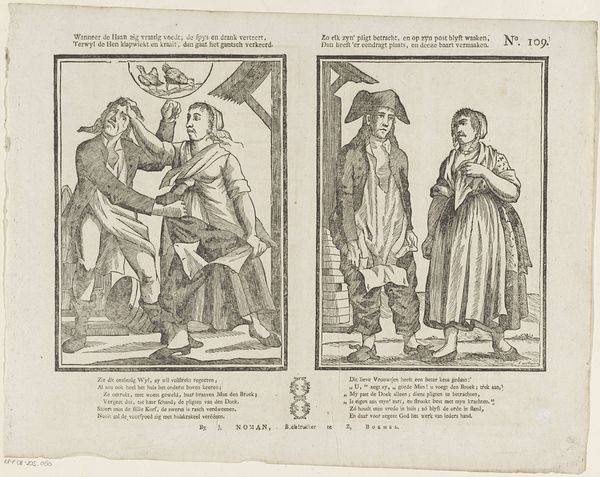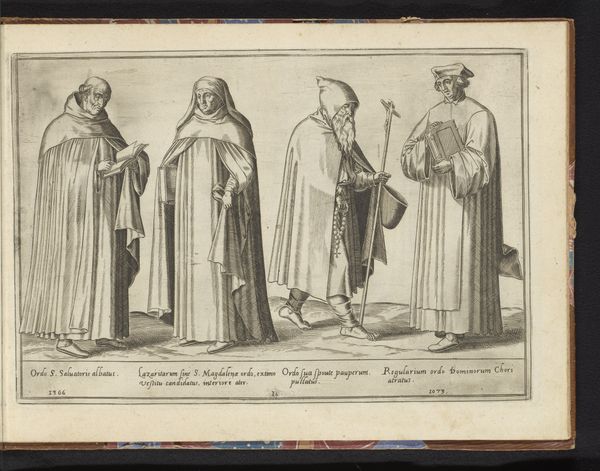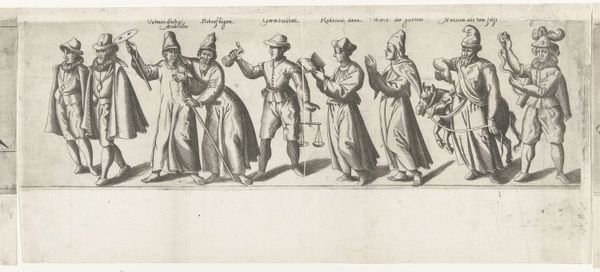
print, engraving
#
portrait
#
baroque
# print
#
old engraving style
#
genre-painting
#
history-painting
#
engraving
Dimensions: height 88 mm, width 100 mm
Copyright: Rijks Museum: Open Domain
Editor: So, here we have "The Banishment of Four Men," an engraving by Esaias van de Velde, dating from 1619 to 1621. It feels quite somber, even with the delicate lines of the engraving. The figures seem… isolated. What story do you think this piece is trying to tell? Curator: Isolated indeed! To me, this image speaks of a period of intense religious and political upheaval in the Netherlands. Van de Velde captures, with sharp lines and considered shading, a sense of public humiliation. Notice how the figures are presented almost as specimens, within that defined oval frame. It feels less like a history painting, and more like a stark document. Do you see how each figure seems burdened by a different length of banishment? Almost like a hierarchy of offense? Editor: Yes, I do! The numbers beneath their names and then that key at the bottom... that’s fascinating. The man holding the paper… he seems to be making some kind of argument. Is that the accusation against them, do you think? Curator: Perhaps. He's certainly the most visually active, isn't he? But that doesn’t necessarily mean innocence. Or does it? Van de Velde is offering us a scene frozen in time, where each viewer can bring their own judgment. Even the fact that it's a print makes it a form of dissemination. Like, here are the guilty men… what should become of them? Editor: It makes the whole thing feel very deliberate, almost like propaganda. But the artistry is undeniable. It’s bleak, but incredibly effective. Curator: Absolutely. And to consider it now, centuries later… we get to witness history filtered through Van de Velde’s very capable hands. Isn't that something? Editor: It is, it really is. It makes me think about how art can shape public perception, even today.
Comments
No comments
Be the first to comment and join the conversation on the ultimate creative platform.
